ASRock Z590 OC Formula
We continue with ASRock’s candidate, the Z590 OC Formula. The OCF name is by no means a newcomer to the overclocking board segment, it’s just that there isn’t always a model for every CPU generation on the market. We were among the few who already received a sample from ASRock at launch and were able to test it extensively for our review. Surprisingly, not much has really changed with the board since then, there have been no groundbreaking new BIOS releases and accordingly IC compatibility is unchanged. But this is not even meant negatively in this case, because even then the board was almost perfect.
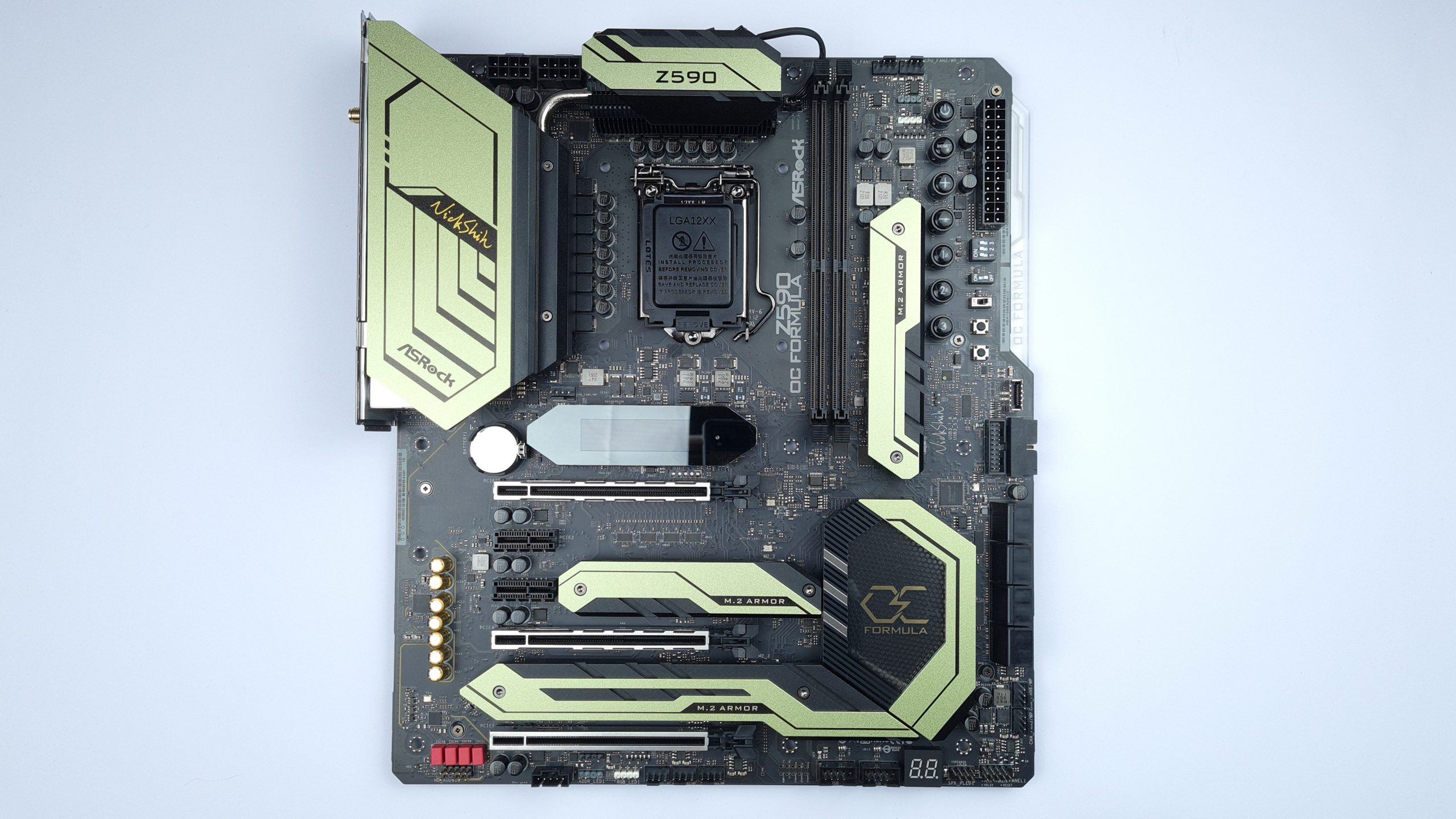
But again from the beginning, externally the board polarizes of course with its green heatsinks and colorful lighting. If you stand out so much visually, you should be able to get behind it functionally, but it does. Starting with all the essential on-board buttons for Power, Reset, Retry, Safe Boot. There are also plus and minus buttons that can be configured for either BCLK or CPU multiplier and three numbered profile buttons where, for example, certain BCLK values can be saved.
In addition, there is the integrated OLED display above the first PCIe slot, which shows all important temperatures and voltages in addition to changes in the BCLK. To be fair, if you press the buttons too quickly in succession, the display sometimes crashes and briefly reboots, which takes about 5 seconds, but this rarely happens and you’re really happy to forgive it. Furthermore there are physical switches for Slow-Mode, LN2-Mode and to disable the PCIe x16 slots, as well as BIOS-Switch, Clear CMOS and BIOS Flashback at the IO on the rear panel. The postcode display has moved to the lower right edge of the board, but is still clearly visible there in most situations.
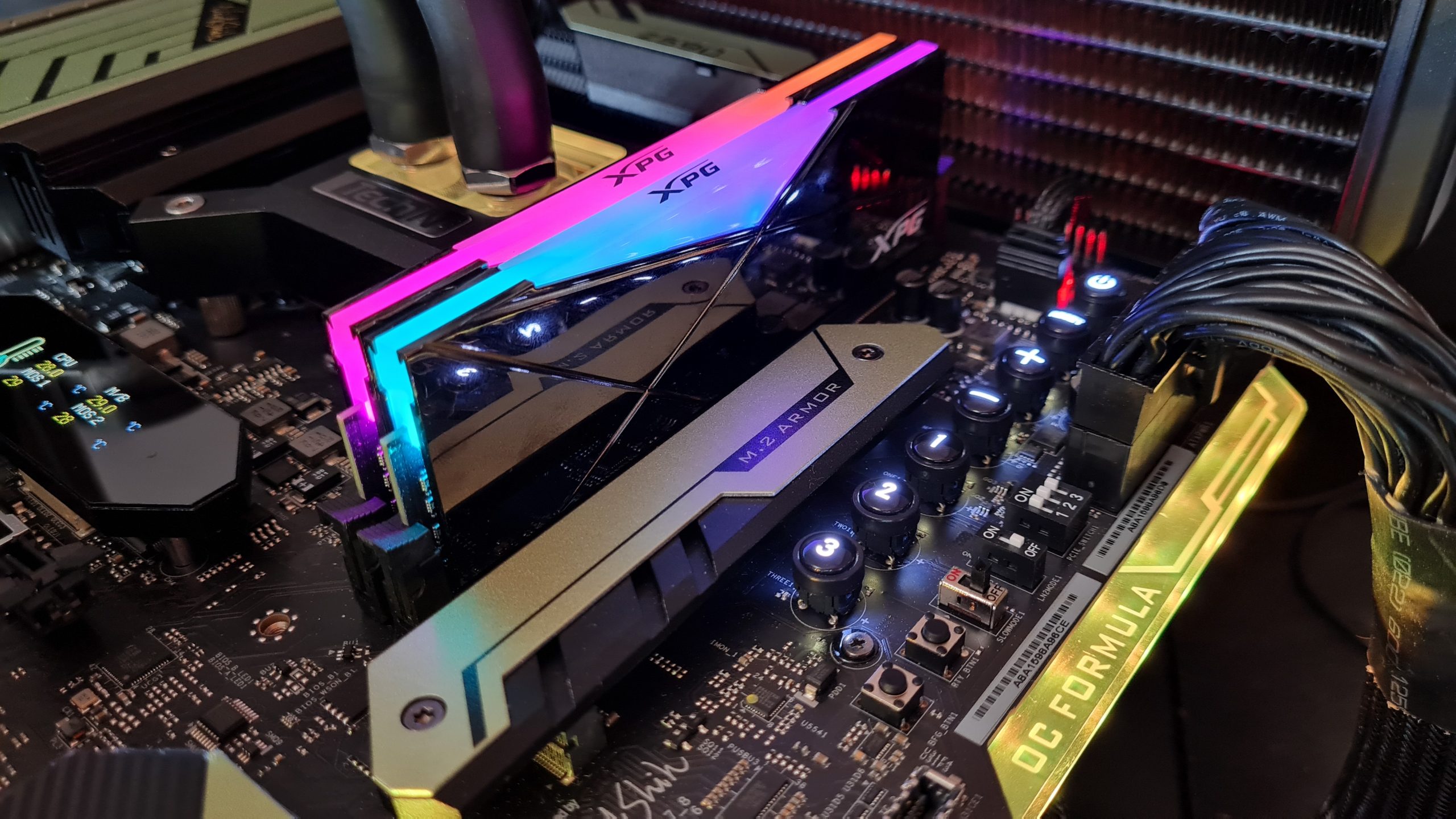
Other goodies for extreme overclockers include dedicated PS/2 ports and Sata ports, with a dedicated Windows XP-compatible chipset. The RAM slots are SMT variants, which provide a more stable signal transmission in contrast to the conventional Though-Hole models. In addition, the backdrill process is used in the manufacturing of the 12-layer PCB to remove unused conductor paths in the board, resulting in fewer reflections and better signal integrity.
The CPU power supply, as with each of the boards in today’s article, is an 8-phase design with 16 90 A Smart Power Stages, in this case driven by 8 doubler drivers each. Although the heatsink is generously dimensioned and offers a lot of surface with its fins, ASRock has additionally installed two 40 mm fans at the top. While these have never fallen on my ears during normal operation, they can also be disabled simply by disconnecting the connector next to the RAM slots. Even so, the power supply with its very high efficiency will not run hot.
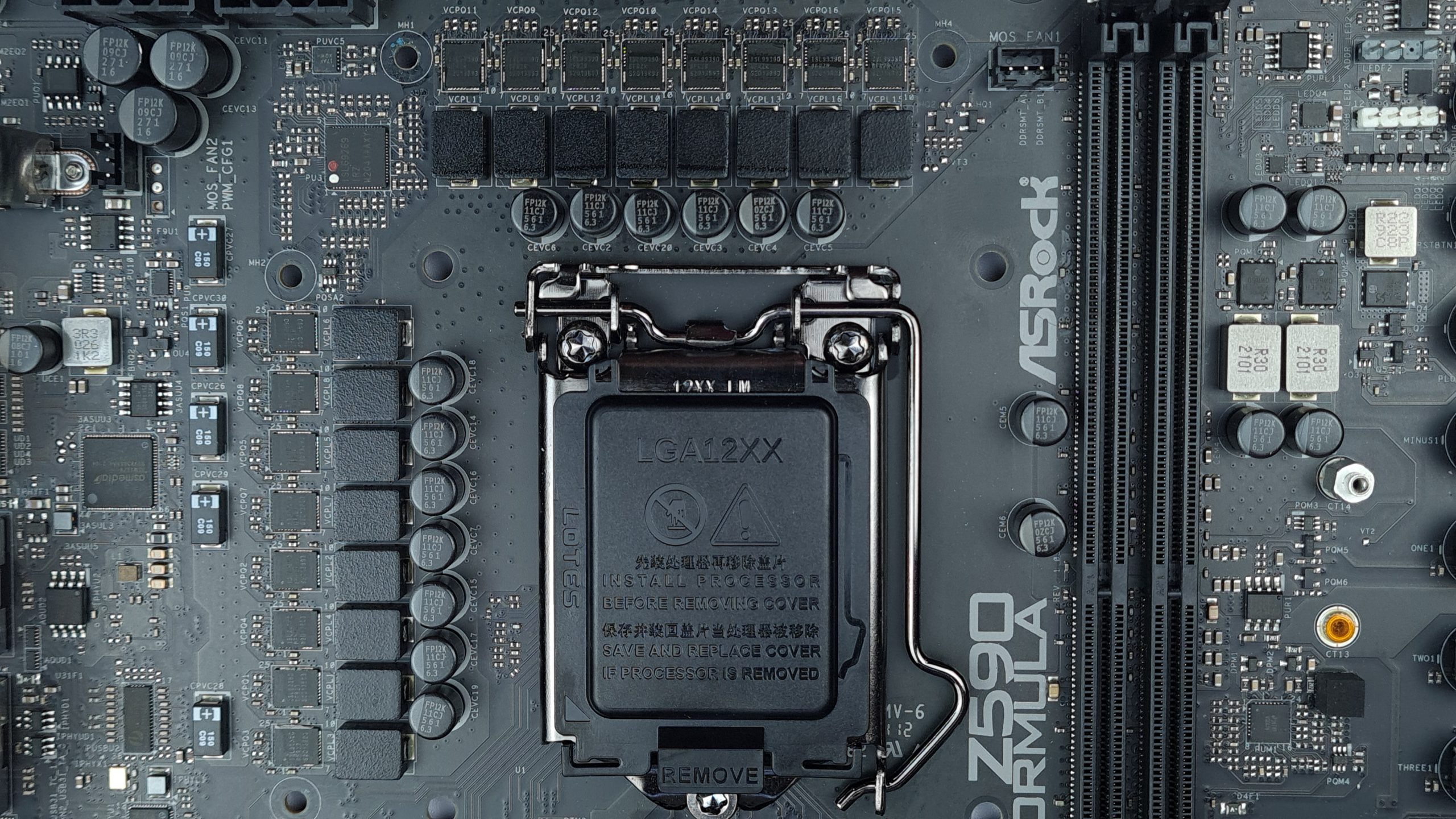
The BIOS layout is limited to the most important options, as is typical for ASRock, but it is clear and intuitive to navigate. There aren’t as many memory training options as on other boards, but I’ve honestly never missed them as the board always seems to automatically make the right settings for them. One very handy setting is the selectable optimizations for certain memory ICs and PCB layouts, which make memory training easier and faster and have often helped me stabilize a setting. In addition, compatibility with a wide variety of ICs and PCB layouts is very good, only with Micron 16 Gbit RevB the clock speed limit seemed to be slightly lower than the Maximus XIII Apex.
Adding to that for the RAM OC, the RTL tuning just works as you would expect. The “Round Trip Latency” optimizations, as it’s called on other boards, is active by default and even if you want to set the RTLs yourself, it works effortlessly. On top of that, the RTLs can be set 1-2 steps tighter for the same clock speed and timings than on any other Z590 board I tested – a dream for latency-sensitive benchmarks like SuperPi! But also for the stabilizations of memory overclocks for the daily operation the board brings a lot of useful options, like the “Eventual” voltages, which become active after the training and thus e.g. allow a lower operating temperature.
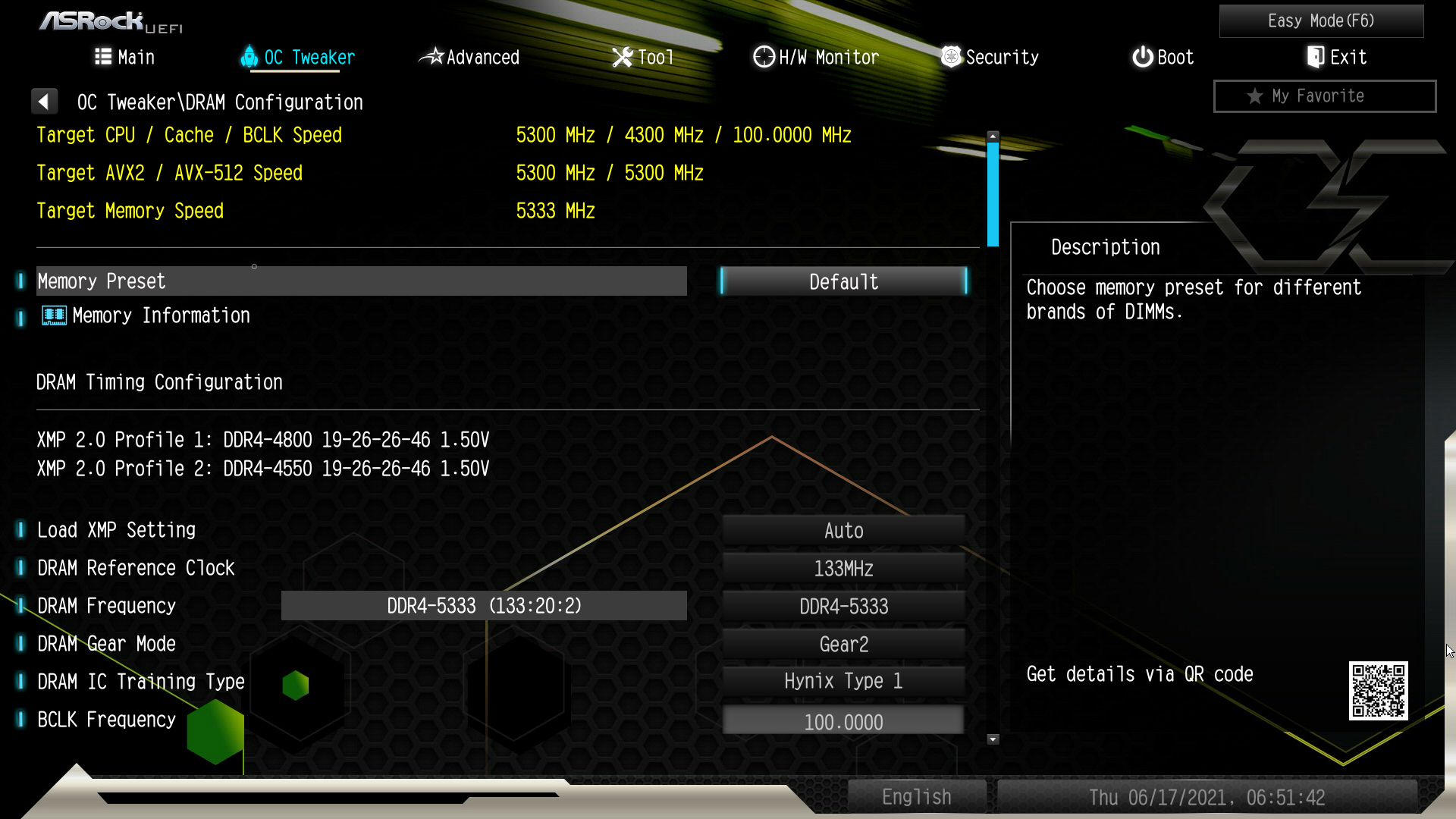
In addition, the BIOS start page can be configured, options can be marked as favorites and even the RGB lighting can be set in detail and dimmed via the BIOS – unlike many other boards only on / off. The only major criticism of the BIOS and its operation is that when initiating a “Safe Boot” the board does not automatically switch to the BIOS, but displays a 10-second timeout, during which you have to press DEL or F2. If you miss this timeout, the board boots into Windows and at the next reboot no longer in “Safe Boot” – this is sometimes a bit annoying.
Speaking of Windows, in the OS ASRock also offers the extremely helpful tools “ASRock Formula Drive” and “ASrock Timing Configurator”. The former is a software tool, similar to Asus’ TurboV Core, to be able to adjust BCLK, multipliers and voltages on the fly. This works without any problems, the only point of criticism is the one or other second of hesitation of the software when starting or moving a slider. The latter is a software to read out the set RAM clock rate and timings including RTLs. The tool cannot change the timings contrary to its name, but it can read them reliably, also on Z590 boards of other manufacturers. ASRock can’t set timings itself, for this I used MemTweakIt from Asus, which is fully compatible.
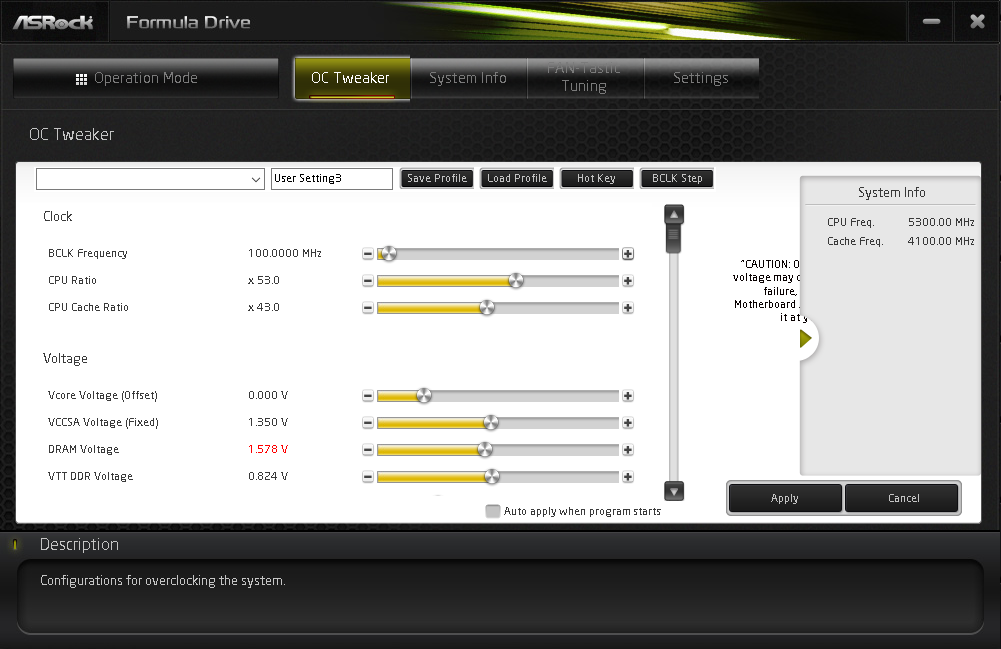
Changing the BCLK in the operating system is extremely useful for approaching the stable performance maximum in various benchmarks. And while many competitors can add just 1 MHz above the booted frequency here before the system freezes, the Z590 OCF can add 3-4 MHz depending on other settings. For example, this takes you from 3866 Mbps to 4020 Mbps on RAM without having to retrain. This may not sound like much now, but it’s incredibly useful for competitions and benchmarking in general. This feature alone makes this motherboard extremely special and valuable.
Now that I have explained long and wide what features the Z590 OCF has to offer, all that remains is to use it in reality. And well, I think the results speak for themselves: Besides beating my previous Z590 best performance in PyPrime 2B, I also managed to repeat my success in Stage 3 with SuperPi 32M with this board. I have to add that I’m definitely not the best RAM overclocker, and certainly not a SuperPi expert. To put it in gaming terms, the Z590 OCF is simply overpowered. So it is indeed my personal first choice for benchmarking with Rocket Lake CPUs on the Z590 platform and therefore gets a retroactive upgrade from me to the award, the highest appreciation a product can receive from us, the Editor’s Choice Award!
Thanks again to ASRock and Nick Shih for developing and releasing this motherboard. Overclocking at the limit of hardware has never been so easy for me and so incredibly fun at the same time. So it’s extremely unfortunate that there has been no announcement of a Z690 successor yet.
ASRock Z590 OC Formula (90-MXBFS0-A0UAYZ)















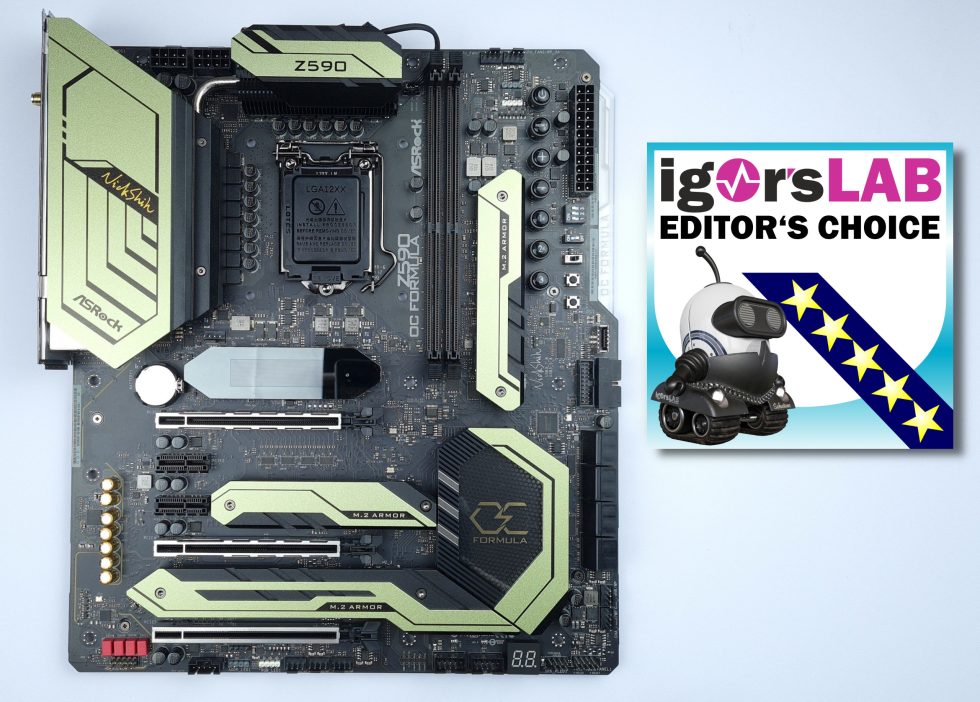



















4 Antworten
Kommentar
Lade neue Kommentare
Mitglied
Neuling
Neuling
1
Alle Kommentare lesen unter igor´sLAB Community →